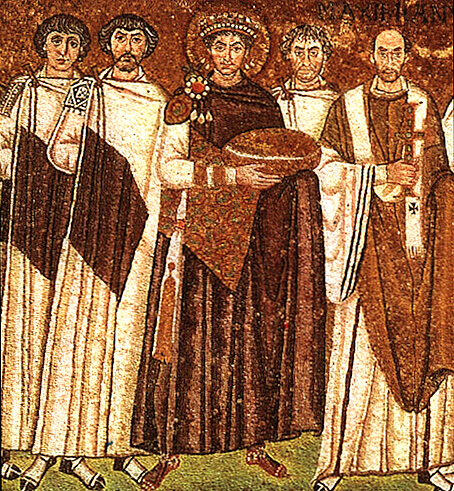Emperor Justinian I and the Non-Chalcedonians

The 6th century was dominated by the person and policies of the Emperor Saint Justinian I (r. 527–565). Perhaps the greatest of all the Byzantine emperors, he was also an outstanding theologian. He correctly understood the relationship between the Church and the State to be one of unity and cooperation, or symphonia, between the priesthood (which “concerns things divine”) and the empire (which “presides over morals”).
Justinian’s goals were to completely reunite the Empire both politically and religiously, by regaining the western part of the empire from the Germanic Ostrogoths, led by Theodoric, and by winning back the Monophysites, or Non-Chalcedonians, to the Orthodox Faith proclaimed at the Council of Chalcedon. Reconciliation with the Roman Church had already been accomplished in 518 by his predecessor, his uncle Emperor Justin I (r. 518–527), who brought the era of the Henotikon and the Acacian Schism to an end by strongly endorsing the Council of Chalcedon. An annual commemoration, on July 16, of the Fathers of the Chalcedonian council was added to the Church calendar at that time.
Justinian accomplished his first goal through the efforts of his armies, led by the great general Belisarius—although within three years after Justinian’s death, the Lombards had taken back much of Italy. But he failed in his second goal, even though his attempts were bold and persistent.
Justinian’s main attempt to win back the Non-Chalcedonians to the Orthodox Church was through the official condemnation of three theologians who had been quite popular in the East, but who had been connected with Nestorius. The first of these, Bishop Theodore of Mopsuestia, had been Nestorius’s teacher; he died in 428, three years before Nestorius was condemned at the Third Ecumenical Council. The other two, Bishop Theodoret of Cyrrus and Bishop Ibas of Edessa, originally had been supporters of Nestorius at the Third Council and therefore had been condemned and deposed at the Robber Council of 449. But at the Fourth Ecumenical Council at Chalcedon, after agreeing to the condemnation of Nestorius they were restored to their bishoprics. By an imperial decree in 544, and by the decision of the major council held in 553—the Fifth Ecumenical Council, also known as the Second Council of Constantinople—Justinian formally condemned the so-called Three Chapters. These chapters were the objectionable, pro-Nestorian writings of Theodoret of Cyrrus and lbas of Edessa, along with the writings and the person of Theodore of Mopsuestia.
